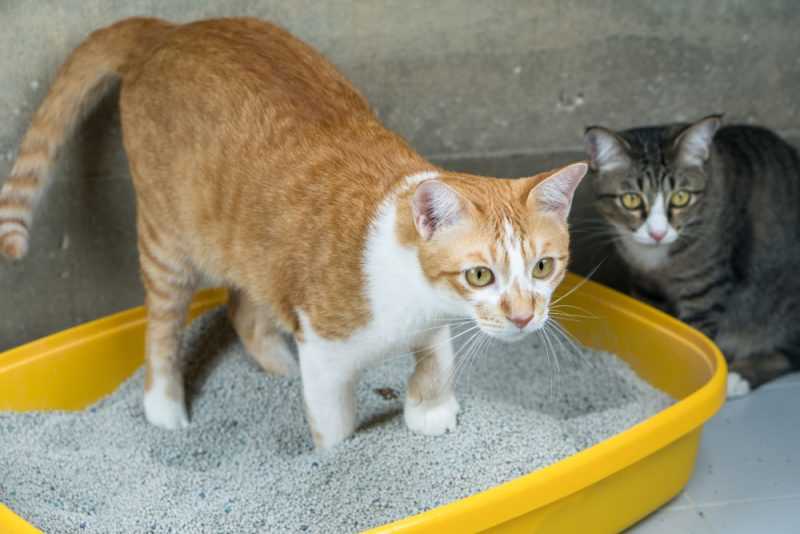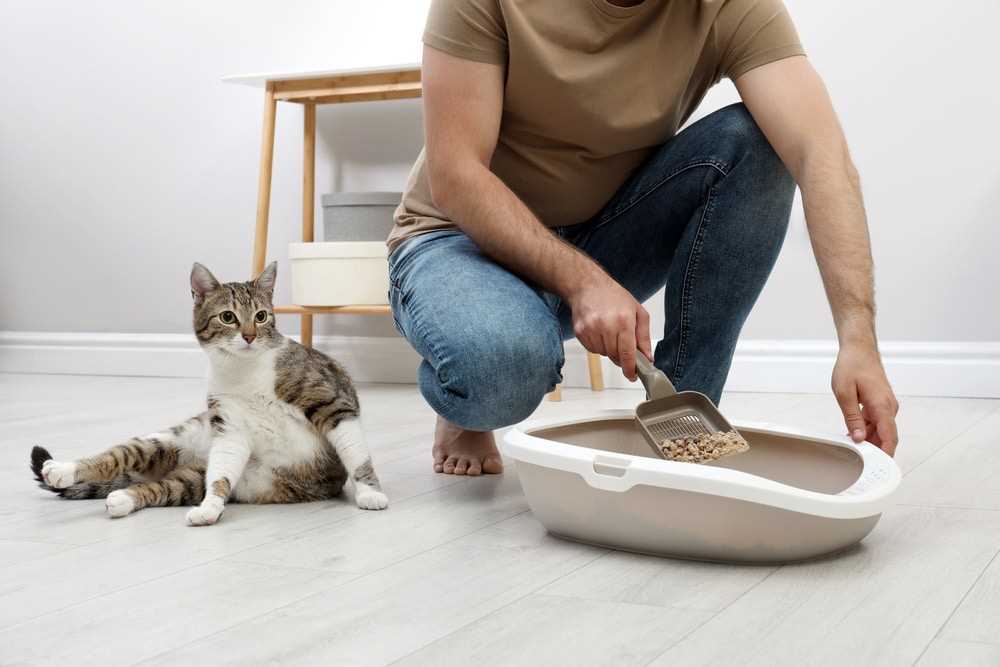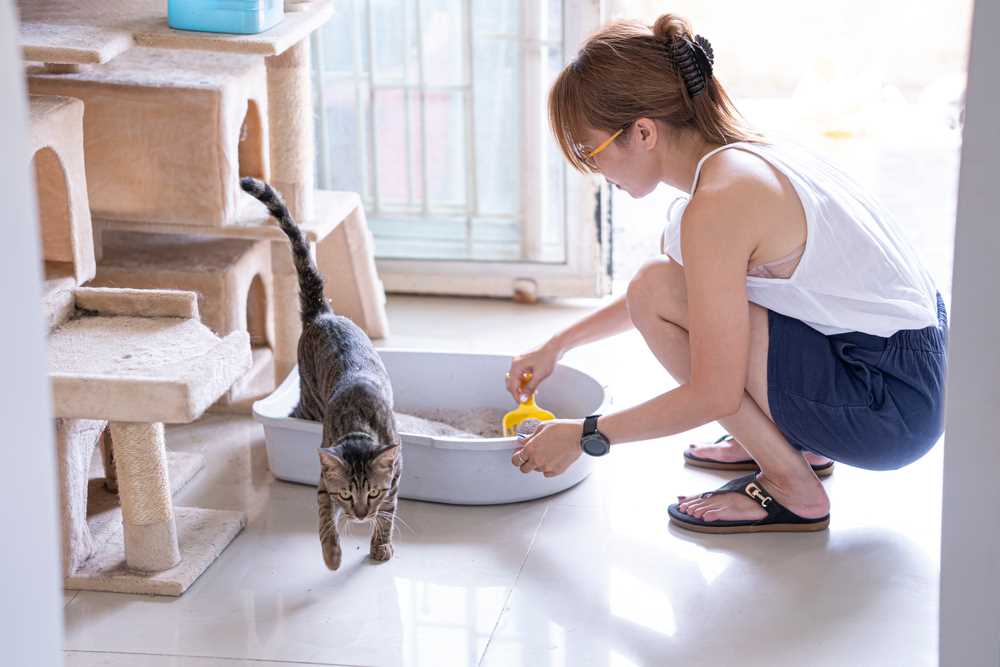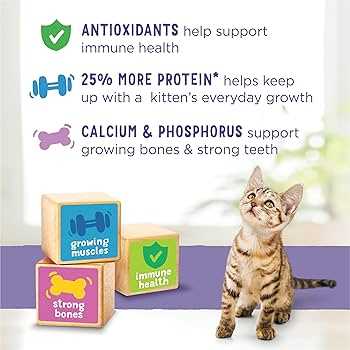Inhaling particles from feline waste can lead to various health concerns. Common symptoms may include respiratory irritation, allergies, and other complications. If you notice signs like sneezing, coughing, or headaches, it’s wise to take action.
As a Scottish Fold, I value cleanliness in my territory. Regular cleaning of litter boxes and proper ventilation in living spaces can significantly reduce risks associated with exposure to waste. Ensure that the area is well-aerated and consider using air purifiers to minimize airborne particles.
It’s important to recognize that some individuals may have heightened sensitivities. If you have pre-existing conditions such as asthma or allergies, it’s even more critical to limit exposure. Regular veterinary check-ups for your feline friend can also help manage any potential health issues.
Can Inhaling Feline Waste Affect Health?
Inhaling particles from feline waste can lead to respiratory issues, especially in sensitive individuals. While not everyone may experience immediate problems, some might develop irritation in their airways or sinus congestion.
Allergens present in the waste can trigger reactions, particularly in those with asthma or allergies. Symptoms might include sneezing, coughing, or shortness of breath. Keeping living spaces clean and well-ventilated helps reduce exposure to these particles.
Regular cleaning routines are essential. Utilize masks and gloves during cleanup to minimize direct contact and inhalation. If symptoms persist, seeking advice from a healthcare professional is advisable.
For anyone with underlying health conditions, extra precautions should be taken. Consider employing air purifiers to filter allergens effectively. Awareness of the potential effects ensures a safer environment for all household members.
Understanding the Health Risks of Cat Urine Exposure

Exposure to ammonia in waste can lead to respiratory issues. Individuals with pre-existing conditions, such as asthma or allergies, may experience aggravated symptoms. It’s crucial to ensure adequate ventilation when cleaning or in areas where my kind frequent.
Potential Infections

Pathogens can be present in waste, posing risks of infections. Toxoplasmosis, while primarily associated with feces, can also be a concern. Practicing good hygiene, such as washing hands after contact, is essential in minimizing health risks.
Preventive Measures

Regular cleaning of litter boxes, using high-quality litter, and maintaining a clean environment can drastically reduce exposure. Opt for unscented products to minimize chemical irritants. Consider using gloves and masks during cleaning to further protect oneself from particles and odors.
Identifying Symptoms of Cat Urine Inhalation
Be alert for signs like coughing, sneezing, or nasal congestion. These can indicate irritation in the respiratory system. If watery eyes or a runny nose appear, it might be a response to inhaling irritants found in feline waste.
Monitor for headaches or dizziness, as these symptoms may arise from exposure to ammonia in waste. If there’s a persistent sore throat or difficulty breathing, seek veterinary advice promptly. It’s crucial to recognize that sensitivities differ among individuals, so reactions can vary.
If you notice changes in behavior, such as increased lethargy or a loss of appetite, consider it a potential warning sign. For more information on keeping your furry companion healthy, check out how much to get cat flea treatment at vets.
Preventive Measures for Cat Owners and Allergies

Keeping my environment clean is crucial for a healthy life. Regular litter box maintenance significantly reduces unpleasant odors and potential health risks. Aim to scoop daily and change the litter weekly.
Consider using clumping litter, which helps contain moisture and odors. Some brands offer low-dust options that minimize airborne particles, benefiting sensitive noses.
Ventilation matters. Ensure your living space has good airflow, as fresh air helps disperse any lingering particles. Open windows or use air purifiers equipped with HEPA filters to trap allergens effectively.
Regular grooming is essential. Brushing me every few days reduces shedding and dander, which are common allergy triggers. If you or your visitors are particularly sensitive, regular grooming can make a noticeable difference.
Establish a designated area for my food and litter. Keeping these separate from living spaces limits exposure to allergens. This practice also promotes a cleaner home environment.
For those concerned about allergies, consider researching the best hypoallergenic food for cats. A suitable diet can help maintain my coat health, potentially reducing allergen levels.
Lastly, consult with a veterinarian for tailored advice regarding allergy management and overall health. Regular check-ups ensure I stay in tip-top shape while you remain comfortable in our shared space.
FAQ:
Can inhaling cat urine cause health problems?
Yes, inhaling cat urine can lead to a variety of health issues, especially for those with respiratory conditions, allergies, or weakened immune systems. Cat urine contains ammonia, which can irritate the respiratory tract and exacerbate asthma or other lung conditions. Long-term exposure may also lead to chronic respiratory problems.
What are the specific risks associated with cat urine exposure?
Exposure to cat urine can pose several risks. The ammonia present in the urine can irritate the eyes, nose, and throat, leading to symptoms such as coughing, sneezing, or a burning sensation. For individuals with asthma, these symptoms may worsen and could trigger an asthma attack. Additionally, cat urine can harbor bacteria and parasites, potentially leading to infections if inhaled or if it comes into contact with broken skin.
How can I clean cat urine safely to avoid health risks?
To clean cat urine safely, wear gloves and a mask to minimize inhalation of fumes. Use a mixture of vinegar and water or a commercial enzymatic cleaner specifically designed for pet urine. Avoid ammonia-based cleaners, as they can exacerbate respiratory irritation. Ensure the area is well-ventilated while cleaning, and consider using an air purifier to reduce airborne particles.
Are there any long-term effects of repeated exposure to cat urine?
Repeated exposure to cat urine can lead to chronic respiratory issues, particularly for individuals who are sensitive or allergic. Prolonged inhalation of ammonia can result in lung damage over time. Additionally, if exposure leads to infections or other health problems, these may have long-term consequences, particularly for vulnerable populations like young children or the elderly.
How can I tell if my cat has a urinary issue that might affect my health?
If your cat is frequently urinating outside the litter box, straining to urinate, or showing signs of discomfort, these could indicate a urinary tract infection or other health issue. It’s important to consult a veterinarian if you notice these symptoms. Addressing your cat’s urinary health can help reduce the risk of exposure to harmful substances in the urine that may affect your health.
Inhaling particles from feline waste can lead to various health concerns. Common symptoms may include respiratory irritation, allergies, and other complications. If you notice signs like sneezing, coughing, or headaches, it’s wise to take action.
As a Scottish Fold, I value cleanliness in my territory. Regular cleaning of litter boxes and proper ventilation in living spaces can significantly reduce risks associated with exposure to waste. Ensure that the area is well-aerated and consider using air purifiers to minimize airborne particles.
It’s important to recognize that some individuals may have heightened sensitivities. If you have pre-existing conditions such as asthma or allergies, it’s even more critical to limit exposure. Regular veterinary check-ups for your feline friend can also help manage any potential health issues.
Can Inhaling Feline Waste Affect Health?
Inhaling particles from feline waste can lead to respiratory issues, especially in sensitive individuals. While not everyone may experience immediate problems, some might develop irritation in their airways or sinus congestion.
Allergens present in the waste can trigger reactions, particularly in those with asthma or allergies. Symptoms might include sneezing, coughing, or shortness of breath. Keeping living spaces clean and well-ventilated helps reduce exposure to these particles.
Regular cleaning routines are essential. Utilize masks and gloves during cleanup to minimize direct contact and inhalation. If symptoms persist, seeking advice from a healthcare professional is advisable.
For anyone with underlying health conditions, extra precautions should be taken. Consider employing air purifiers to filter allergens effectively. Awareness of the potential effects ensures a safer environment for all household members.
Understanding the Health Risks of Cat Urine Exposure

Exposure to ammonia in waste can lead to respiratory issues. Individuals with pre-existing conditions, such as asthma or allergies, may experience aggravated symptoms. It’s crucial to ensure adequate ventilation when cleaning or in areas where my kind frequent.
Potential Infections

Pathogens can be present in waste, posing risks of infections. Toxoplasmosis, while primarily associated with feces, can also be a concern. Practicing good hygiene, such as washing hands after contact, is essential in minimizing health risks.
Preventive Measures

Regular cleaning of litter boxes, using high-quality litter, and maintaining a clean environment can drastically reduce exposure. Opt for unscented products to minimize chemical irritants. Consider using gloves and masks during cleaning to further protect oneself from particles and odors.
Identifying Symptoms of Cat Urine Inhalation
Be alert for signs like coughing, sneezing, or nasal congestion. These can indicate irritation in the respiratory system. If watery eyes or a runny nose appear, it might be a response to inhaling irritants found in feline waste.
Monitor for headaches or dizziness, as these symptoms may arise from exposure to ammonia in waste. If there’s a persistent sore throat or difficulty breathing, seek veterinary advice promptly. It’s crucial to recognize that sensitivities differ among individuals, so reactions can vary.
If you notice changes in behavior, such as increased lethargy or a loss of appetite, consider it a potential warning sign. For more information on keeping your furry companion healthy, check out how much to get cat flea treatment at vets.
Preventive Measures for Cat Owners and Allergies

Keeping my environment clean is crucial for a healthy life. Regular litter box maintenance significantly reduces unpleasant odors and potential health risks. Aim to scoop daily and change the litter weekly.
Consider using clumping litter, which helps contain moisture and odors. Some brands offer low-dust options that minimize airborne particles, benefiting sensitive noses.
Ventilation matters. Ensure your living space has good airflow, as fresh air helps disperse any lingering particles. Open windows or use air purifiers equipped with HEPA filters to trap allergens effectively.
Regular grooming is essential. Brushing me every few days reduces shedding and dander, which are common allergy triggers. If you or your visitors are particularly sensitive, regular grooming can make a noticeable difference.
Establish a designated area for my food and litter. Keeping these separate from living spaces limits exposure to allergens. This practice also promotes a cleaner home environment.
For those concerned about allergies, consider researching the best hypoallergenic food for cats. A suitable diet can help maintain my coat health, potentially reducing allergen levels.
Lastly, consult with a veterinarian for tailored advice regarding allergy management and overall health. Regular check-ups ensure I stay in tip-top shape while you remain comfortable in our shared space.
FAQ:
Can inhaling cat urine cause health problems?
Yes, inhaling cat urine can lead to a variety of health issues, especially for those with respiratory conditions, allergies, or weakened immune systems. Cat urine contains ammonia, which can irritate the respiratory tract and exacerbate asthma or other lung conditions. Long-term exposure may also lead to chronic respiratory problems.
What are the specific risks associated with cat urine exposure?
Exposure to cat urine can pose several risks. The ammonia present in the urine can irritate the eyes, nose, and throat, leading to symptoms such as coughing, sneezing, or a burning sensation. For individuals with asthma, these symptoms may worsen and could trigger an asthma attack. Additionally, cat urine can harbor bacteria and parasites, potentially leading to infections if inhaled or if it comes into contact with broken skin.
How can I clean cat urine safely to avoid health risks?
To clean cat urine safely, wear gloves and a mask to minimize inhalation of fumes. Use a mixture of vinegar and water or a commercial enzymatic cleaner specifically designed for pet urine. Avoid ammonia-based cleaners, as they can exacerbate respiratory irritation. Ensure the area is well-ventilated while cleaning, and consider using an air purifier to reduce airborne particles.
Are there any long-term effects of repeated exposure to cat urine?
Repeated exposure to cat urine can lead to chronic respiratory issues, particularly for individuals who are sensitive or allergic. Prolonged inhalation of ammonia can result in lung damage over time. Additionally, if exposure leads to infections or other health problems, these may have long-term consequences, particularly for vulnerable populations like young children or the elderly.
How can I tell if my cat has a urinary issue that might affect my health?
If your cat is frequently urinating outside the litter box, straining to urinate, or showing signs of discomfort, these could indicate a urinary tract infection or other health issue. It’s important to consult a veterinarian if you notice these symptoms. Addressing your cat’s urinary health can help reduce the risk of exposure to harmful substances in the urine that may affect your health.
Inhaling particles from feline waste can lead to various health concerns. Common symptoms may include respiratory irritation, allergies, and other complications. If you notice signs like sneezing, coughing, or headaches, it’s wise to take action.
As a Scottish Fold, I value cleanliness in my territory. Regular cleaning of litter boxes and proper ventilation in living spaces can significantly reduce risks associated with exposure to waste. Ensure that the area is well-aerated and consider using air purifiers to minimize airborne particles.
It’s important to recognize that some individuals may have heightened sensitivities. If you have pre-existing conditions such as asthma or allergies, it’s even more critical to limit exposure. Regular veterinary check-ups for your feline friend can also help manage any potential health issues.
Can Inhaling Feline Waste Affect Health?
Inhaling particles from feline waste can lead to respiratory issues, especially in sensitive individuals. While not everyone may experience immediate problems, some might develop irritation in their airways or sinus congestion.
Allergens present in the waste can trigger reactions, particularly in those with asthma or allergies. Symptoms might include sneezing, coughing, or shortness of breath. Keeping living spaces clean and well-ventilated helps reduce exposure to these particles.
Regular cleaning routines are essential. Utilize masks and gloves during cleanup to minimize direct contact and inhalation. If symptoms persist, seeking advice from a healthcare professional is advisable.
For anyone with underlying health conditions, extra precautions should be taken. Consider employing air purifiers to filter allergens effectively. Awareness of the potential effects ensures a safer environment for all household members.
Understanding the Health Risks of Cat Urine Exposure

Exposure to ammonia in waste can lead to respiratory issues. Individuals with pre-existing conditions, such as asthma or allergies, may experience aggravated symptoms. It’s crucial to ensure adequate ventilation when cleaning or in areas where my kind frequent.
Potential Infections

Pathogens can be present in waste, posing risks of infections. Toxoplasmosis, while primarily associated with feces, can also be a concern. Practicing good hygiene, such as washing hands after contact, is essential in minimizing health risks.
Preventive Measures

Regular cleaning of litter boxes, using high-quality litter, and maintaining a clean environment can drastically reduce exposure. Opt for unscented products to minimize chemical irritants. Consider using gloves and masks during cleaning to further protect oneself from particles and odors.
Identifying Symptoms of Cat Urine Inhalation
Be alert for signs like coughing, sneezing, or nasal congestion. These can indicate irritation in the respiratory system. If watery eyes or a runny nose appear, it might be a response to inhaling irritants found in feline waste.
Monitor for headaches or dizziness, as these symptoms may arise from exposure to ammonia in waste. If there’s a persistent sore throat or difficulty breathing, seek veterinary advice promptly. It’s crucial to recognize that sensitivities differ among individuals, so reactions can vary.
If you notice changes in behavior, such as increased lethargy or a loss of appetite, consider it a potential warning sign. For more information on keeping your furry companion healthy, check out how much to get cat flea treatment at vets.
Preventive Measures for Cat Owners and Allergies

Keeping my environment clean is crucial for a healthy life. Regular litter box maintenance significantly reduces unpleasant odors and potential health risks. Aim to scoop daily and change the litter weekly.
Consider using clumping litter, which helps contain moisture and odors. Some brands offer low-dust options that minimize airborne particles, benefiting sensitive noses.
Ventilation matters. Ensure your living space has good airflow, as fresh air helps disperse any lingering particles. Open windows or use air purifiers equipped with HEPA filters to trap allergens effectively.
Regular grooming is essential. Brushing me every few days reduces shedding and dander, which are common allergy triggers. If you or your visitors are particularly sensitive, regular grooming can make a noticeable difference.
Establish a designated area for my food and litter. Keeping these separate from living spaces limits exposure to allergens. This practice also promotes a cleaner home environment.
For those concerned about allergies, consider researching the best hypoallergenic food for cats. A suitable diet can help maintain my coat health, potentially reducing allergen levels.
Lastly, consult with a veterinarian for tailored advice regarding allergy management and overall health. Regular check-ups ensure I stay in tip-top shape while you remain comfortable in our shared space.
FAQ:
Can inhaling cat urine cause health problems?
Yes, inhaling cat urine can lead to a variety of health issues, especially for those with respiratory conditions, allergies, or weakened immune systems. Cat urine contains ammonia, which can irritate the respiratory tract and exacerbate asthma or other lung conditions. Long-term exposure may also lead to chronic respiratory problems.
What are the specific risks associated with cat urine exposure?
Exposure to cat urine can pose several risks. The ammonia present in the urine can irritate the eyes, nose, and throat, leading to symptoms such as coughing, sneezing, or a burning sensation. For individuals with asthma, these symptoms may worsen and could trigger an asthma attack. Additionally, cat urine can harbor bacteria and parasites, potentially leading to infections if inhaled or if it comes into contact with broken skin.
How can I clean cat urine safely to avoid health risks?
To clean cat urine safely, wear gloves and a mask to minimize inhalation of fumes. Use a mixture of vinegar and water or a commercial enzymatic cleaner specifically designed for pet urine. Avoid ammonia-based cleaners, as they can exacerbate respiratory irritation. Ensure the area is well-ventilated while cleaning, and consider using an air purifier to reduce airborne particles.
Are there any long-term effects of repeated exposure to cat urine?
Repeated exposure to cat urine can lead to chronic respiratory issues, particularly for individuals who are sensitive or allergic. Prolonged inhalation of ammonia can result in lung damage over time. Additionally, if exposure leads to infections or other health problems, these may have long-term consequences, particularly for vulnerable populations like young children or the elderly.
How can I tell if my cat has a urinary issue that might affect my health?
If your cat is frequently urinating outside the litter box, straining to urinate, or showing signs of discomfort, these could indicate a urinary tract infection or other health issue. It’s important to consult a veterinarian if you notice these symptoms. Addressing your cat’s urinary health can help reduce the risk of exposure to harmful substances in the urine that may affect your health.







